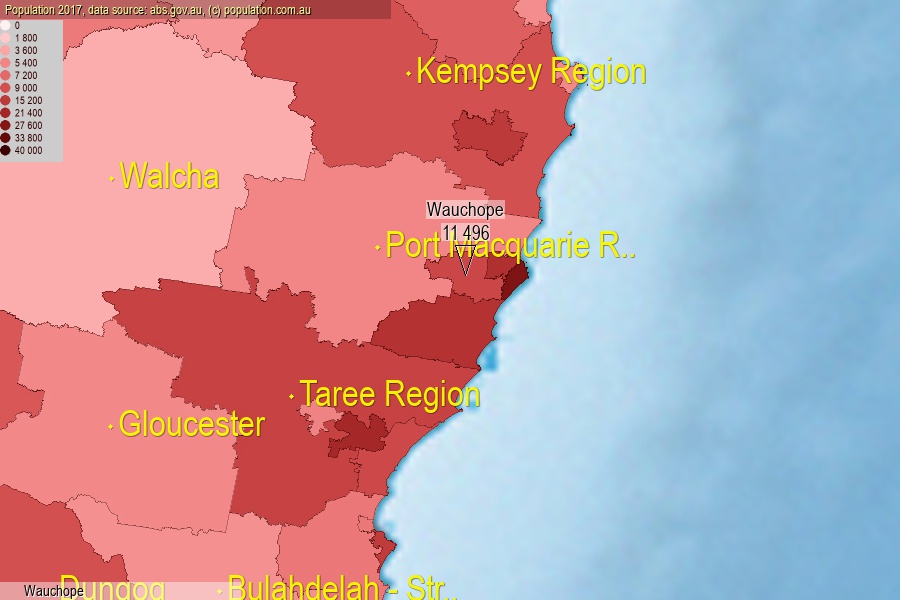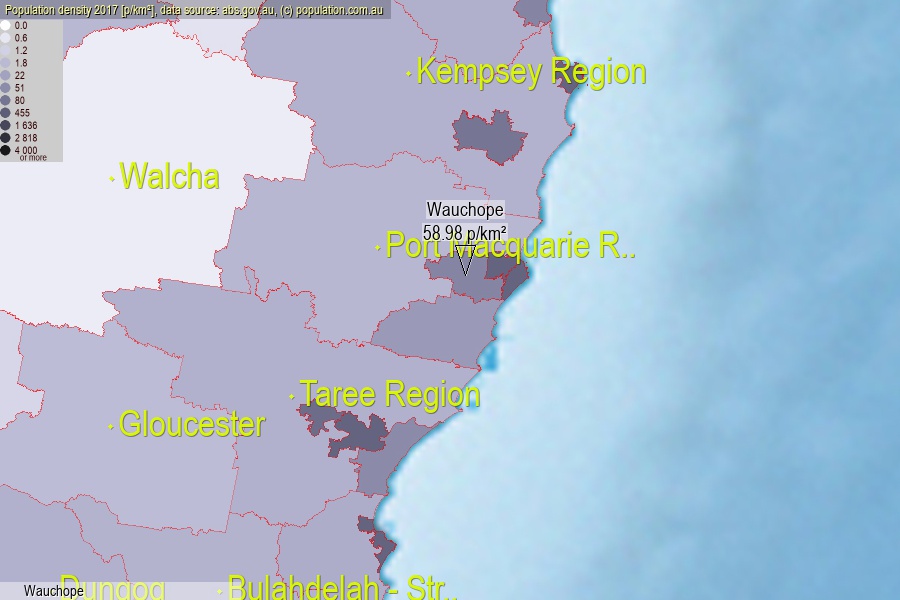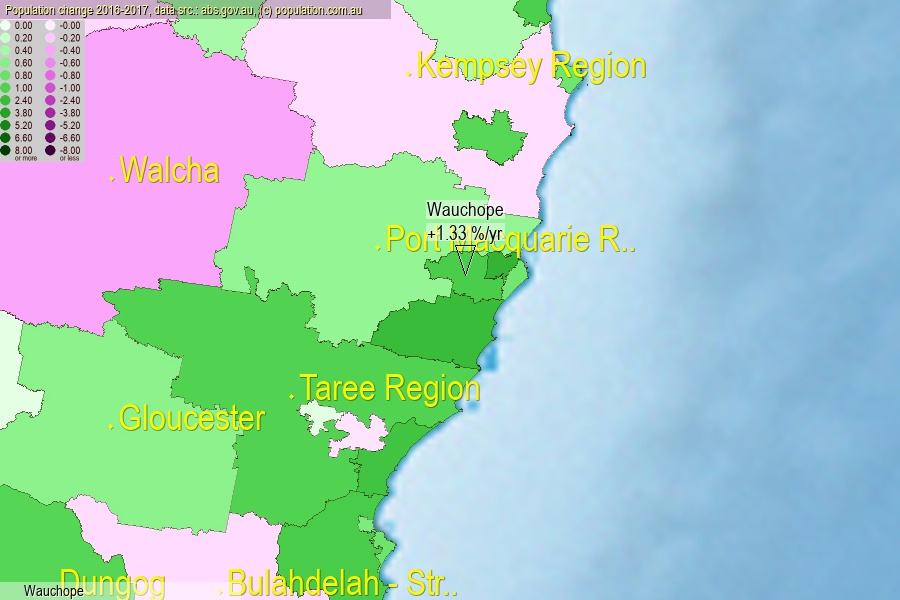 population.com.au
population.com.auLast official estimated population of Wauchope (as Statistical Area Level 2) was 11 496 people (on 2017-06-30)[2]. This was 0.05% of total Australian population and 0.144% of NSW population. Area of Wauchope is 194.90 km², in this year population density was 58.98 p/km² . If population growth rate would be same as in period 2016-2017 (+1.33%/yr), Wauchope population in 2025 would be 12 779. [0]



Click to enlarge. Wauchope is located in the center of the images.
Population [people], population density [p./km²] and population change [%/year] [2]
View borders » (new window) [4]
[1991-1992] +3.06 %/Yr.
[1992-1993] +2.41 %/Yr.
[1993-1994] +2.98 %/Yr.
[1994-1995] +2.16 %/Yr.
[1995-1996] +1.63 %/Yr.
[1996-1997] +1.07 %/Yr.
[1997-1998] +2.19 %/Yr.
[1998-1999] +0.82 %/Yr.
[1999-2000] +3.01 %/Yr.
[2000-2001] +1.47 %/Yr.
[2001-2002] +2.35 %/Yr.
[2002-2003] +2.08 %/Yr.
[2003-2004] +2.26 %/Yr.
[2004-2005] +1.81 %/Yr.
[2005-2006] +1.97 %/Yr.
[2006-2007] +2.20 %/Yr.
[2007-2008] +1.48 %/Yr.
[2008-2009] +1.81 %/Yr.
[2009-2010] +2.90 %/Yr.
[2010-2011] +0.97 %/Yr.
[2011-2012] +2.33 %/Yr.
[2012-2013] +1.52 %/Yr.
[2013-2014] +0.86 %/Yr.
[2014-2015] +1.02 %/Yr.
[2015-2016] +1.92 %/Yr.
[2016-2017] +1.33 %/Yr.
[0] Calculated with linear interpolation from officially estimated population
[1] Read more about SA2 and Australian Statistical Geography Standard (ASGS) on abs.gov.au
[2] Population data from Australian Bureau of Statistics (Population and density: 2017; change: 2016-2017)
[3] Digital Boundaries: Australian Statistical Geography Standard (ASGS) 2016.
[4] Border coordinates are simplifyed using Ramer-Douglas-Peucker algorithm.